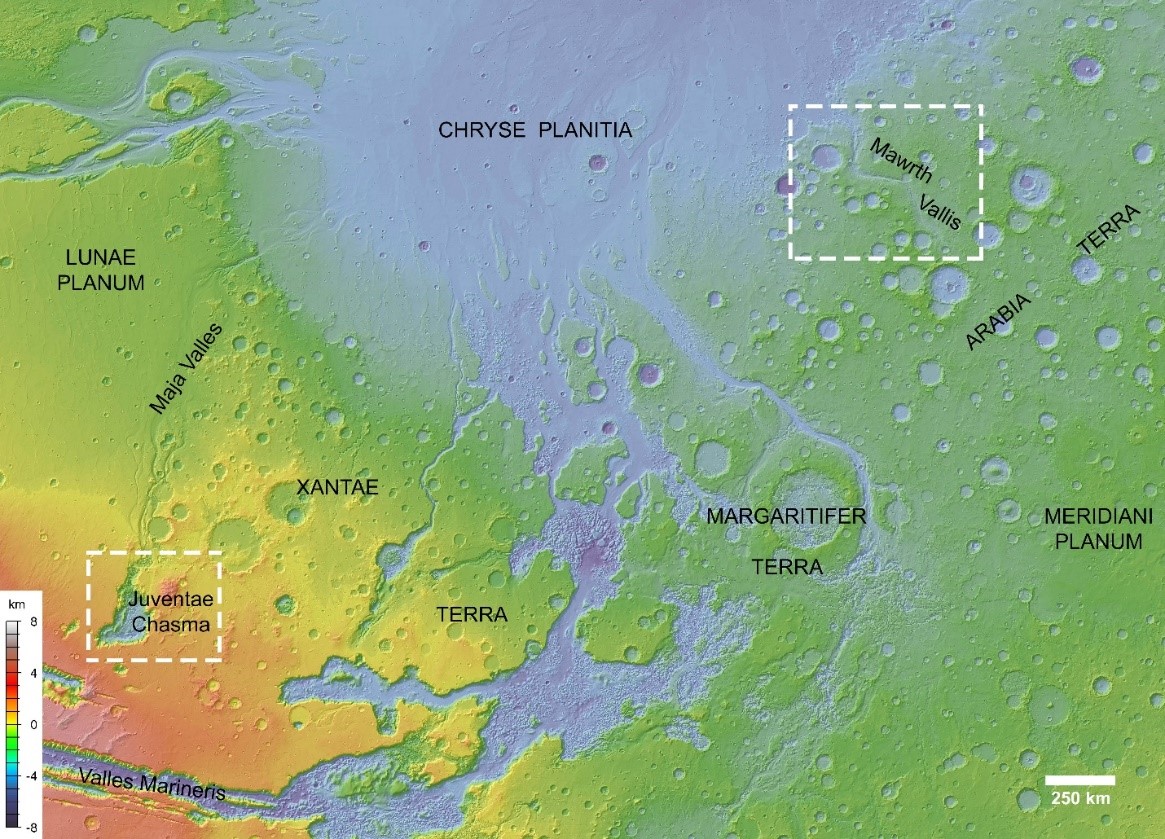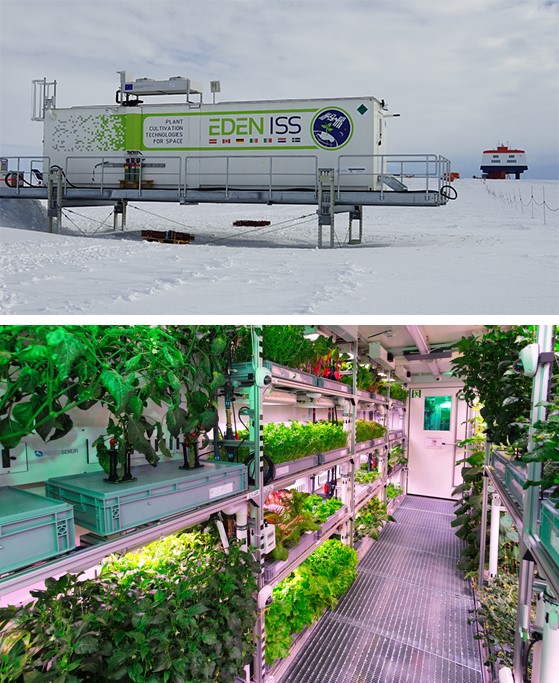Resource Reconnaissance for Future Crewed Missions to Mars
- 1Germany (christoph.gross@fu-berlin.de)
- 2SETI Institute & NASA-Ames Research Center, Mountain View, CA, USA
- 3Institut d'Astrophysique Spatiale, Paris- Sud University, Orsay, France
- 4German Aerospace Center (DLR), Institute of Space Systems, Bremen, Germany
Mars offers abundant raw materials that are of potential value for future human endeavors. Numerous vital elements can be found directly at the surface. The exploration of these natural resource deposits, the concentration of the raw materials contained in them, and the feasibility of mining and refinement are open questions that require further consideration. The natural geological variations in ore deposits can significantly impact viability of exploration sites and of the engineering architecture. Therefore, comprehension of these features is crucial for selecting and optimizing a particular technical design. This underlines the need for accurate resource exploration missions. Refinement and restructuring must be investigated to provide reliable fabrication systems since In Situ Resource Utilization (ISRU) is able to drastically cut down logistical dependence from Earth.
Water is an essential requirement for an extended stay on Mars. It will serve as a consumable for astronauts and is needed for the production of propellant and oxygen, and for construction use. Water could even serve as radiation shielding if procurable in sufficient amounts. In contrast to subterranean ice, hydrated minerals offer a promising and reliable potential for water extraction directly at the surface of Mars and at lower latitudes. A large diversity of hydrated minerals such as phyllosilicates, hydrated silica, zeolites, and sulfates have been detected from orbit using visible near infrared (VIS-NIR) reflectance spectroscopy [1-3]. We address the concept of harvesting resources in situ by reviewing the potential of several large deposits of hydrated minerals found on the surface of Mars thanks to previous orbital detections (Fig. 1). We also present estimates of water volumes potentially retrievable from specific deposits and describe additional uses of the hydrated minerals for example as feedstock for a Bio-regenerative Life-Support System (BLSS).
A BLSS architecture tends to be superior in terms of mass efficiency compared to non-bio-regenerative, i.e., chemical or physical life support systems, especially for protracted mission durations [4]. BLSS have the unique advantage of managing biological waste through biological processes exclusively. In addition, if higher plants are cultivated, they offer psychological comforts and nutritional benefits derived from the presence of plant life and as fresh food [5]. Thus, BLSS systems realized in the form of one or multiple greenhouses, are an indispensable component for sustaining a human presence on Martian terrain [6, 7]. Over the last 40 years, several studies have shown that crops can be efficiently grown on hydroponic or soilless media [8, 9]. In fact, crop cultivation in controlled environments can even meet or surpass record yields [10]. From 2018 to 2022, the EDEN ISS project from the German Aerospace Center operated a space-analog test facility greenhouse near the Neumayer III station in Antarctica, potentially resulting in the closest Mars analog we can find on Earth (Fig. 2). In the first year of operation, 268 kg of edible biomass was produced on the 12.5 m2 cultivation area of the greenhouse [11] with soilless media. Additional advantages include removing CO2 from the atmosphere, keeping water in a recycling loop, and producing oxygen. These findings demonstrate the importance of BLSS and can provide a scalable estimate of the potential contribution to logistics and required transport of materials for long duration crewed missions.
- [1] S.L. Murchie et al. (2009). A synthesis of Martian aqueous mineralogy after 1 Mars year of observations from the Mars Reconnaissance Orbiter, J Geophys Res Planets 114. https://doi.org/10.1029/2009JE003342.
- [2] J.F. Mustard et al. (2008). Hydrated silicate minerals on Mars observed by the Mars Reconnaissance Orbiter CRISM instrument, Nature 454, 305–309. https://doi.org/10.1038/nature07097.
- [3] B.L. Ehlmann, C.S. Edwards (2014). Mineralogy of the Martian Surface, Annu Rev Earth Planet Sci 42, 291–315. https://doi.org/10.1146/annurev-earth-060313-055024.
- [4] C. Lasseur (2010). Melissa: The European project of a closed life support system, Gravitational and Space Biology 23 (2).
- [5] C. Mitchell (1994). Bioregenerative life-support systems, Am J Clin Nutr, 60 820S-824S. https://doi.org/10.1093/ajcn/60.5.820S.
- [6] M. Bamsey et al. (2009). Canadian advanced life support capacities and future directions, Advances in Space Research 44, 151–161. https://doi.org/10.1016/j.asr.2009.03.024.
- [7] H. Liu et al. (2021). Review of research into bioregenerative life support system(s) which can support humans living in space, Life Sci Space Res (Amst) 31, 113–120. https://doi.org/10.1016/j.lssr.2021.09.003.
- [8] J.F. Thomas, C.D. Raper (1983) Photoperiod Effects on Soybean Growth during the Onset of Reproductive Development under Various Temperature Regimes, Botanical Gazette 144, 471–476. http://www.jstor.org/stable/2474450.
- [9] Y. Tako (2001). Integration of Sequential Cultivation of Main Crops and Gas and Water Processing Subsystems Using Closed Ecology Experiment Facilities, https://doi.org/10.4271/2001-01-2133.
- [10] R.M. Wheeler, T.W. Tibbitts (1987). Utilization of potatoes for life support systems in space: III. Productivity at successive harvest dates under 12-H and 24-H photoperiods, Am Potato J 64, 311–320. https://doi.org/10.1007/BF02853523.
- [11] P. Zabel et al. (2020). Biomass Production of the EDEN ISS Space Greenhouse in Antarctica During the 2018 Experiment Phase, Front Plant Sci 11. https://doi.org/10.3389/fpls.2020.00656.

Figure 1: Color-coded Mars Orbiter Laser Altimeter (MOLA) map showing the example regions in dashed white box.

Figure 2: The EDEN ISS greenhouse in Antarctica with the Neumayer III station in the background (top). Cultivation area inside the test container (bottom).
How to cite: Gross, C., Al-Samir, M., Bishop, J. L., Poulet, F., Postberg, F., and Schubert, D.: Resource Reconnaissance for Future Crewed Missions to Mars , Europlanet Science Congress 2024, Berlin, Germany, 8–13 Sep 2024, EPSC2024-807, https://doi.org/10.5194/epsc2024-807, 2024.